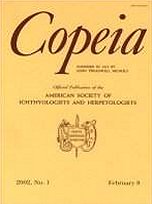Symphurus monostigmus, described on the basis of two males (48.8 and 54.6 mm SL) collected on the inner continental shelf at 65–110 m off the coast of KwaZulu-Natal, South Africa, is distinguished from congeners by the following combination of characters: an irregular, conspicuous dark spot overlying the anteroventral ocular-side body cavity; a 1-2-2-2-2 pattern of interdigitation of dorsal-fin pterygiophores and neural spines; 14 caudal-fin rays; 86 dorsal-fin rays; 73–74 anal-fin rays; 48 total vertebrae; five hypurals; black peritoneum (posterior region only); ocular side uniformly yellowish-white with numerous, darker reddish-brown freckles especially noticeable along dorsal and ventral contours of body (freckles coalesced into several darker blotches on dorsal and ventral margins on posterior half of body), blind side uniformly yellowish-white, and dorsal and anal fins without conspicuous spots or ocelli. Symphurus monostigmus is most similar to S. macrophthalmus, but differs from that species in ID pattern (1-2-2-1-2 in S. macrophthalmus) and its smaller eye (100–138 vs. 211 in thousandths of HL) with much smaller pupil (pupil diameter/eye diameter 28–32% vs. ca. 54% in S. macrophthalmus).
How to translate text using browser tools
1 May 2006
New Western Indian Ocean Tonguefish (Pleuronectiformes: Cynoglossidae, Symphurus)
Thomas A. Munroe
ACCESS THE FULL ARTICLE





